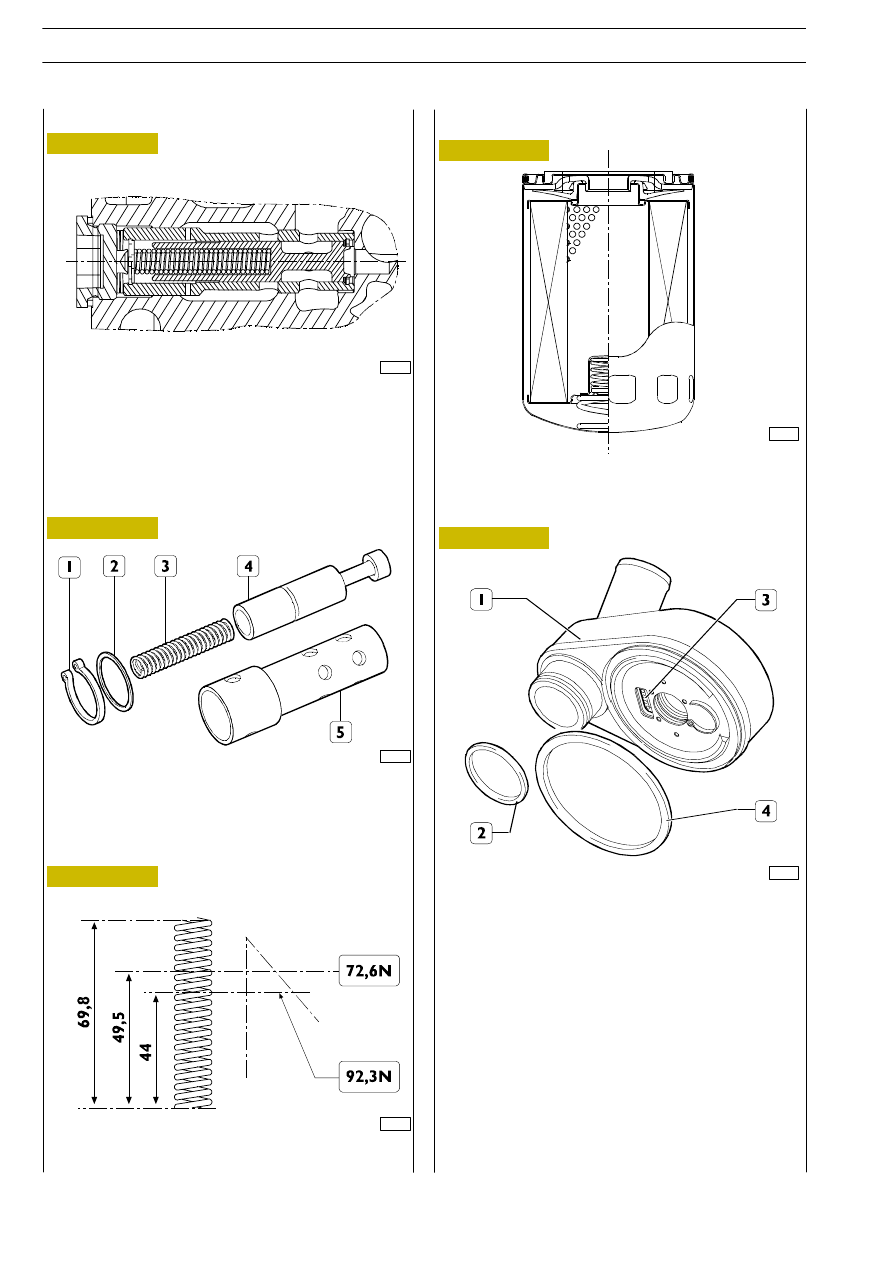Iveco Daily. Manual - part 102

CROSS-SECTION OF OIL PRESSURE CONTROL
VALVE MOUNTED IN CRANKCASE
Valve removed from crankcase L = 51.75 mm.
Valve fitted in crankcase L = 50.75 mm.
Start of opening 4 bar L = 49.5
maximum opening 4.6 bar L = 44.
75520
Figure 224
Figure 225
Figure 226
543070
Oil filter
75521
75523
Figure 227
PARTS COMPRISING THE OIL PRESSURE
CONTROL VALVE
1. Split ring — 2. Washer — 3. Spring — 4. Valve —
5. Valve casing.
75522
MAIN DATA OF THE OIL PRESSURE CONTROL
VALVE SPRING
Oil filter with single filtration with built-in by-pass valve —
opening pressure 2.5
± 0.3 bar.
543110
Modine heat exchanger
75524
Figure 228
Thoroughly clean the heat exchanger (1).
Always change the seals (2 and 4).
Built-in safety valve (3).
Opening pressure
0.82 - 1.03 bar
543475
Oil pressure control valve
F1A ENGINE
D
AILY
386
Base - May 2004